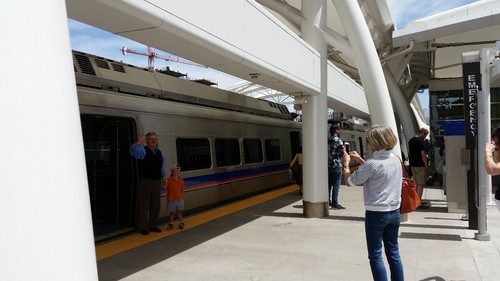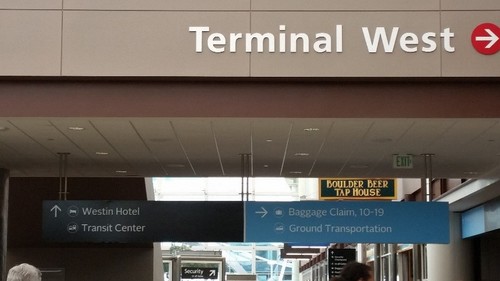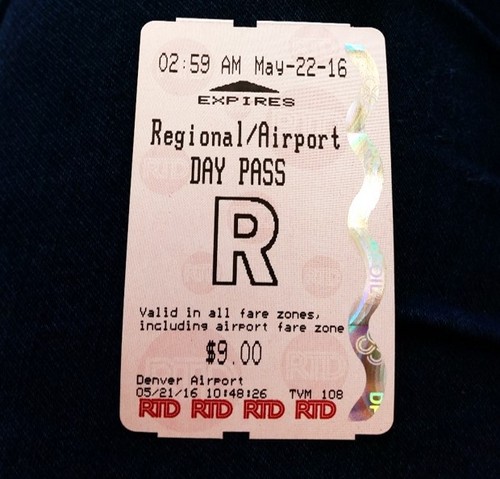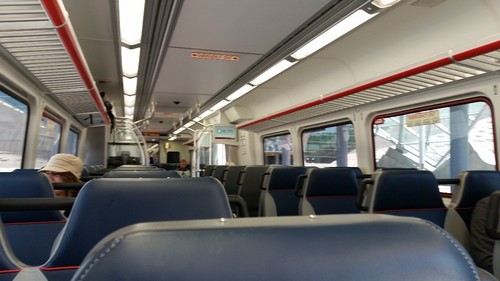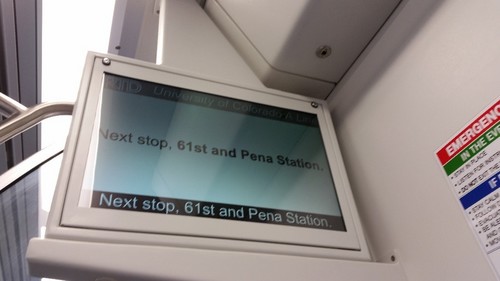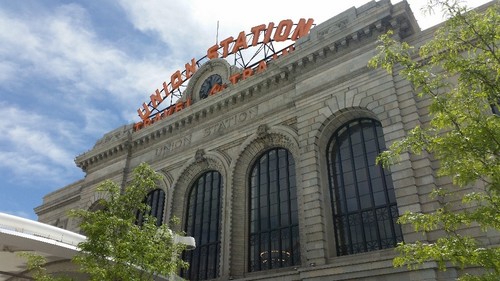In Denver, you can now take a train from the airport to downtown
There’s a new way to get from Denver’s airport to downtown: the University of Colorado A Line, which opened in April. When I rode it, I enjoyed how easy it was to get a ticket and connect to other transit lines downtown. I’m a little worried about long ticket lines and a confusing name, though.
The A Line runs 23 at-grade miles to Union Station (near Coors Field, where the Colorado Rockies play), with a expected to leave the airport about every 15 minutes. While it’s named after the University of Colorado, that’s just a business partnership; none of the line’s eight stops has a University of Colorado campus nearby (that I could tell).
The line connects to other operating light rail lines (streetcars with overhead wires) and bus systems, such as the 16th Street Mall bus (which will take you farther into downtown Denver). Two new commuter rail lines are expected to open later this year. As the RTD (Regional Transportation District) website states, “this is all part of FasTracks, a multi-billion dollar voter-approved transit expansion plan bringing you more transportation options than ever before.”
A day pass for the A Line is $9. Compare that to an average $74 taxi or $33 Uber (what I paid to ride from downtown back to the airport), and this option is the clear winner when it comes to price.
At the airport, the train is just a short trip down the escalators from baggage claim.
When I got to the ticket kiosks, two people were ready to help me purchase a rail pass, which was quite easy. Currently, there are only four kiosks, two of which are debit/credit only. A small line did form as people waited to purchase a ticket. When more people are traveling, I imagine there’s going to be an annoying wait.
Luckily, there was a train waiting at the station when I was ready to go. It had four rail cars with space to stow luggage, skis, bikes, and wheelchairs.
It was nice to ride a new train with clean seats and floors (though there was no “new train” smell, from what I could tell). There are three ways of communicating with passengers: announcements (engineer & pre-recorded), LED screens, and a scrolling message bar. The engineer also updated us on delays and was easy to hear— just like it happens on Metro, we had to pause until another train cleared the station.
There isn’t all that much of a view once you get past the first few stops. It’s rows and rows of industrial buildings (such as the Seattle Fish Co. — “If it swims, we have it.”). A fun part is that the train does blow its whistle before every road crossing, which the kids on board loved.
Interestingly enough, the rail line had people stationed at each crossing (which all had stopping arms). My guess is that they were there to ensure people stopped and that the guard arms were working properly.
The train line ends at Union Station, and there aren’t currently any plans to expand it farther. Lastly, there were signs indicating other fare options if you weren’t using the train to get to the airport but to commute.
I do see issues with the ticket lines as the A Line catches on with visitors and Denverites. Even at Union Station, there were only a handful of kiosks. And the rail line name could cause some confusion. But overall, riding the A Line was a pleasant experience, and I’d use it again.

